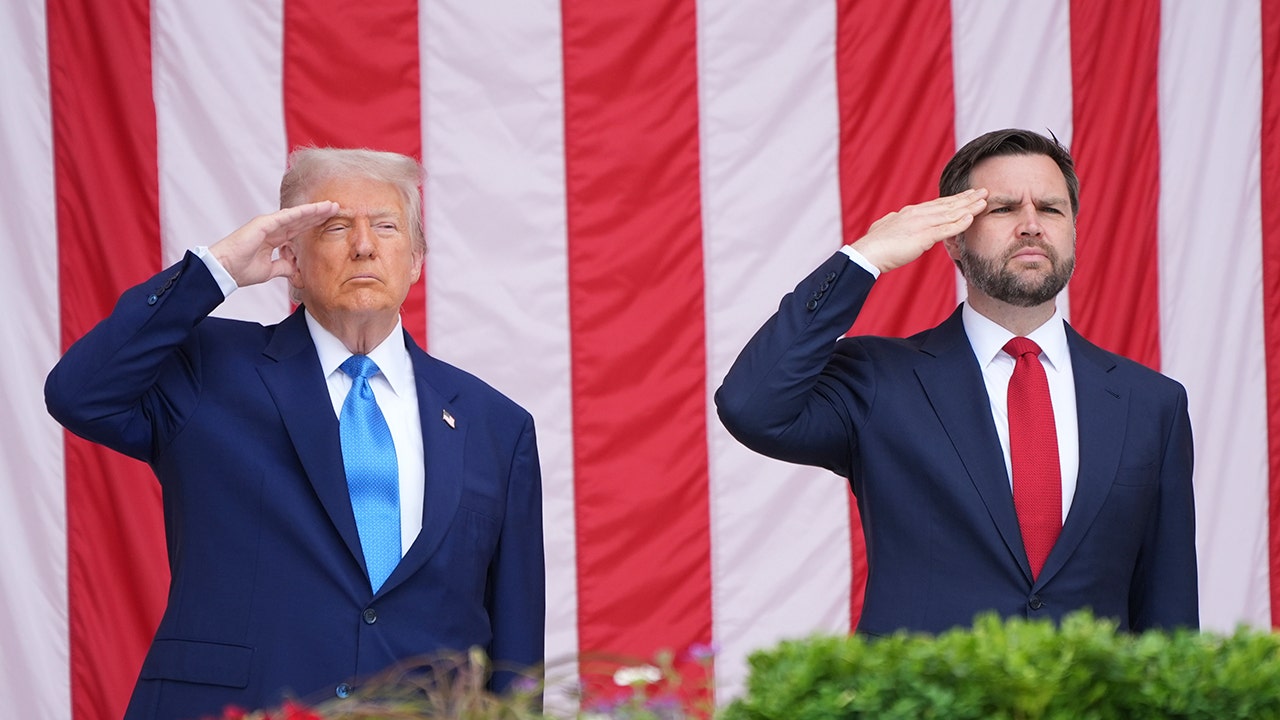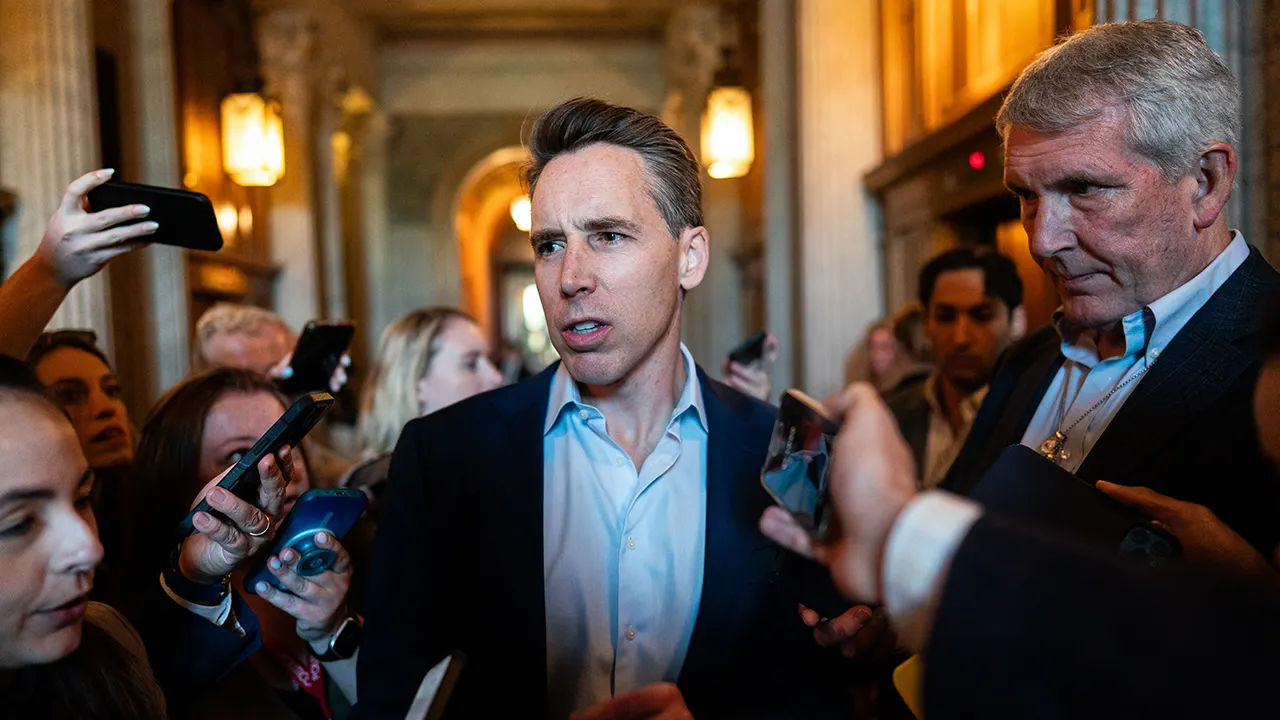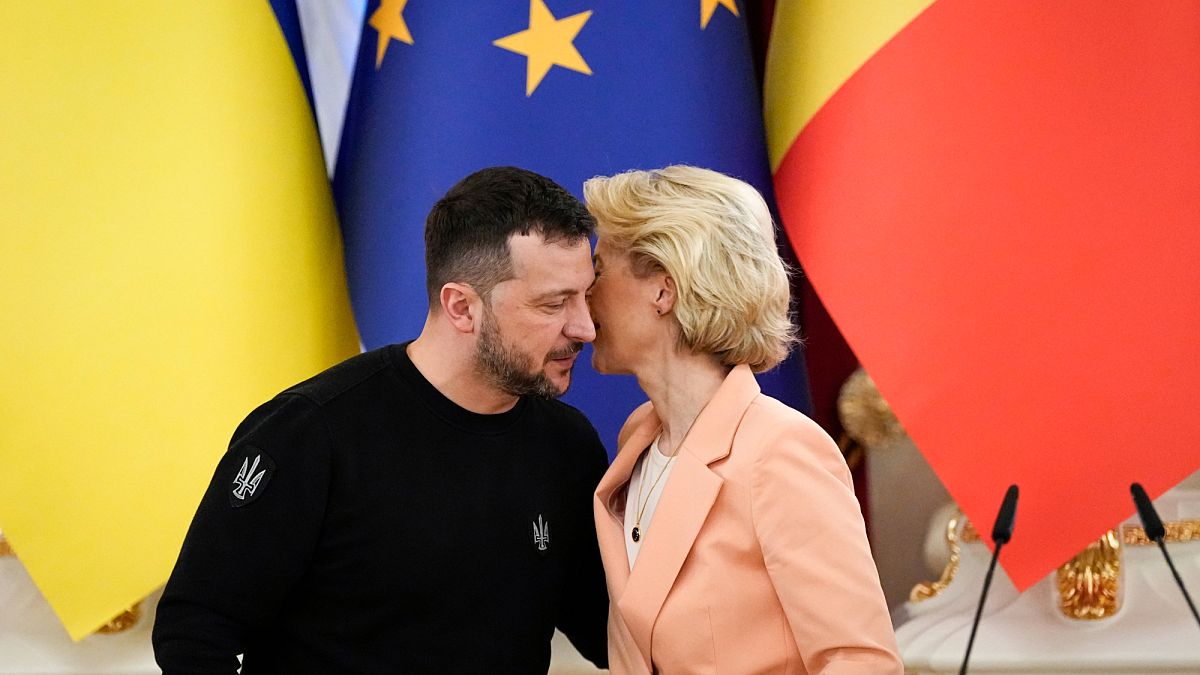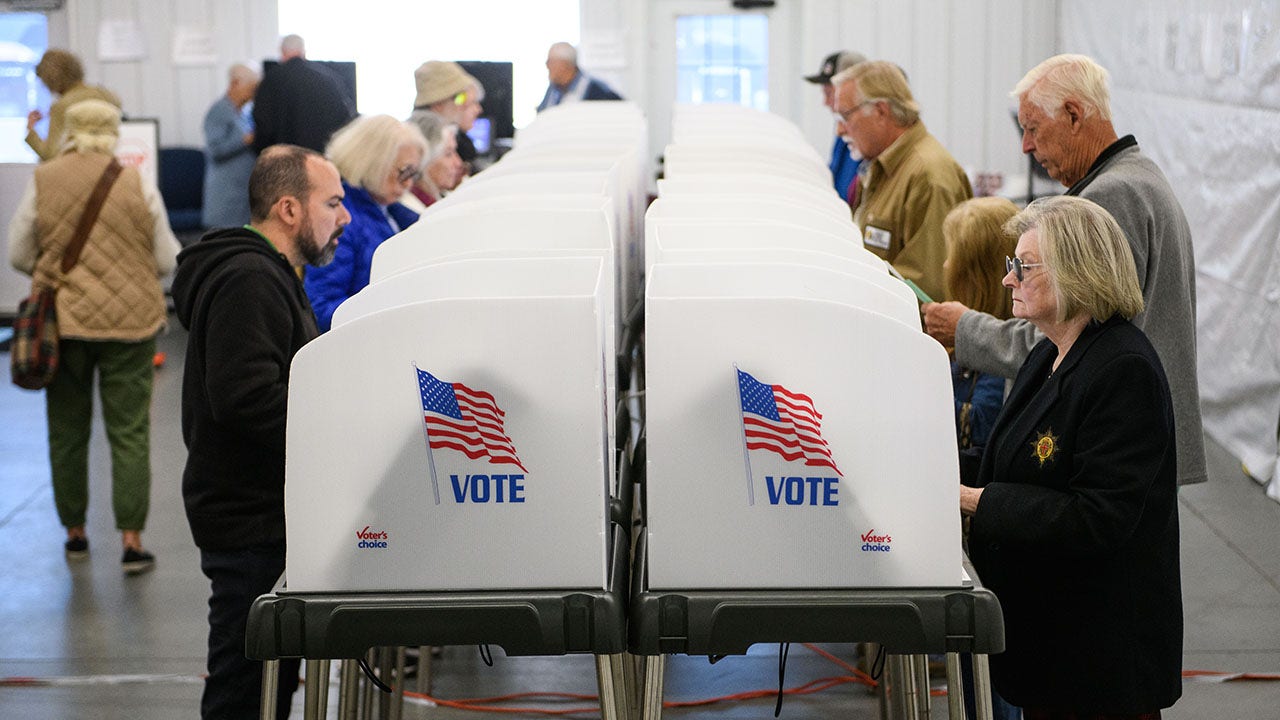Business
Paul Brodeur, Reporter Who Exposed the Hazards of Asbestos, Dies at 92

Paul Brodeur, whose deeply reported articles in The New Yorker brought national attention to subjects like the toxic hazards of asbestos and the destructive impact of chlorofluorocarbons on the ozone layer, died on Aug. 2 in Hyannis, Mass. He was 92.
His death, in a hospital, was caused by complications of pneumonia and hip replacement surgery, said his daughter, the novelist and memoirist Adrienne Brodeur.
Mr. Brodeur’s first long-form article for The New Yorker, “The Magic Mineral,” published in 1968, described at great length the history of asbestos, a heat-resistant fiber with a history of being used in thousands of products — including building and insulation materials, rugs, potholders, roofing, military helmets and gas masks — and its connection to cancer, particularly mesothelioma, among workers who had been exposed to it.
“There is not an automobile, airplane, train, ship, missile or engine of any sort that does not contain asbestos in some form or other, and it has found its way into literally every building, factory, home and farm across the land,” he wrote. “And, because its minuscule fibers are eminently respirable, asbestos has also found its way into the lungs of man, where, by remaining as indestructible as it does in nature, it can wreak terrible havoc.”
It was the sort of exposé that called to mind the groundbreaking work of Rachel Carson, whose book “Silent Spring,” about the devastating ecological impact of pesticides and insecticides like DDT, had been serialized in three parts in The New Yorker in 1962.
William Shawn, the editor of the magazine at the time, had encouraged Ms. Carson, and then Mr. Brodeur, to write about the environment. Mr. Brodeur continued to write about asbestos, most notably in two series over the next two decades.
The first, spread over five parts in 1973, examined the impact of asbestos on workers and the failure of federal agencies to keep companies from exposing employees to myriad health consequences. It won The New Yorker a National Magazine Award.
The second series, in 1985, was about lawsuits filed by victims against asbestos companies, including the Manville Corporation, the world’s largest producer, which filed for Chapter 11 bankruptcy protection in 1982.
“He wrote in such a way that people learned what asbestos was, where it was found and how people could be exposed to it,” Dr. Richard Lemen, a former assistant United States surgeon general, said in a phone interview. He added, “I think his reporting had a big impact on the industry; it took notice, and it had to clean up its act.”
At the beginning of the first series, Mr. Brodeur described a conversation he had with Clarence Holder, an assistant regional administrator of the Occupational Safety and Health Administration in Dallas, about the unsafe conditions at a recently shuttered asbestos insulation plant in Tyler, Texas, where dust was so thick that workers could not see across the building.
“I asked Holder if he knew that asbestos inhalation could raise not only pulmonary scarring but lung cancer, mesothelioma and other malignancies,” Mr. Brodeur wrote. “He replied that he had never heard of mesothelioma and that he doubted if there was any real proof that asbestos could cause cancer.”
The Environmental Protection Agency tried to ban the use of asbestos use in 1989. The effort was overturned by a federal court two years later, but the ruling retained prohibitions against new uses of asbestos. It is still used in the manufacture of household bleach, bulletproof vests, electrical insulation and automotive products.
Paul Adrian Brodeur Jr. was born on May 16, 1931, in Boston and grew up in nearby Arlington, Mass. His father, who fought as an artillery officer in the French Army during World War I, was an orthodontist and a sculptor of bronze bas-relief portraits. His mother, Sarah (Smith) Brodeur, was an actress who became a professor of early childhood education at Endicott College in Beverly, Mass.
After graduating from Phillips Academy in Andover, Mass., Mr. Brodeur attended Harvard, where he majored in English and graduated with a bachelor’s degree in 1953. He then served for two years as an Army counterintelligence agent in Europe.
He stayed in Paris for a year after his discharge and sold a short story, “The Sick Fox,” an allegory about the postwar mood in Germany, to The New Yorker in 1957. He turned it into his first novel, published in 1963.
After joining the magazine’s staff in 1958, Mr. Brodeur initially wrote Talk of the Town pieces, commentaries and short stories.
He had a reputation at The New Yorker as a tough, punctilious and pugnacious reporter.
“He’s a feisty individual,” Anthony Bailey, another staff writer, told The New York Observer (now known simply as Observer) in 2014. “He reminds me, in many ways, of the French writers of the 19th century — people like Zola, who got very worked up about justice.”
In addition to asbestos, Mr. Brodeur got worked up about hazards like aerosol sprays and air-conditioners that emitted chlorofluorocarbons, or CFCs, which has led to a breakdown in the ozone layer. In 1975, he was among the first to report, on the ozone layer’s depletion. In a second article, in 1986, he described the impacts of a hole in the ozone layer, including changes in crop yields, higher skin cancer rates and the killing of the larvae of seafood species, including shrimp and crab.
A. Karim Ahmed, a former research director of the Natural Resources Defense Council, said that Mr. Brodeur’s 1975 article influenced federal agencies like the Environmental Protection Agency and the Consumer Product Safety Commission as CFCs began to be phased out well before a 1987 international treaty, the Montreal Protocol, started to regulate the production and consumption of chemicals that damage the ozone layer.
“His article and our work helped give the U.S. a head start in phasing out CFCs over everyone else,” Dr. Ahmed said in a phone interview.
Mr. Brodeur also reported on the possible dangers of radiation from microwave ovens, computer terminals and electromagnetic power lines. But this reporting was not as widely accepted as his work on asbestos and CFCs.
In 1997, the National Academy of Sciences found little to no evidence of any risk from power-line radiation. Other studies have been far from conclusive. (Mr. Brodeur noted, however, that the World Health Organization classified microwave radiation from cellphones to be a possible carcinogen.)
And in 2019, the science journalist William J. Broad of The Times found that in his 1977 book, “The Zapping of America: Microwaves, Their Deadly Risk, and the Cover-Up,” Mr. Brodeur had relied on “suggestive but often ambiguous evidence to argue” that the growing use of the high frequencies of microwaves could endanger human health.
Like “The Zapping of America,” many of Mr. Brodeur’s nonfiction books grew out of his reporting for The New Yorker. Among them were “Outrageous Misconduct: The Asbestos Industry on Trial” (1985); “Currents of Death” (1989); and “The Great Power-Line Cover-Up: How the Utilities and the Government Are Trying to Hide the Cancer Hazard Posed by Electromagnetic Fields” (1993).
He also wrote another novel, “The Stunt Man” (1970), about a young Army deserter who becomes a stuntman for a tyrannical director. It was adapted into a film in 1980 starring Peter O’Toole as the director and Steve Railsback as the title character.
Mr. Brodeur published a memoir, “Secrets: A Writer in the Cold War,” in 1997.
In addition to his daughter, he is survived by his son, Stephen; three grandchildren; and his sister, Valjeanne Paxton. His marriages to Malabar Schleiter and Margaret Staats ended in divorce. He had separated from his third wife, Milane Christiansen, before her death in 2013. His brother, David, died in 2019. Another son, Alan, died in infancy.
Mr. Brodeur learned when he was in college that he had another brother, Adrian Paul Brodeur, from his father’s earlier marriage. He died in 1992. Paul and Adrian never met.
Mr. Brodeur left The New Yorker shortly after Tina Brown took over as editor in 1992.
His final article was, fittingly, a reminder of Rachel Carson’s legacy.
After citing the implications for breast cancer prevention found in a recent study that showed that women with the greatest exposure to DDT were four times more likely to develop breast cancer than women with the least exposure, he concluded:
“Rachel Carson lives.”

Business
California Senate passes bill that aims to make AI chatbots safer

California lawmakers on Tuesday moved one step closer to placing more guardrails around artificial intelligence-powered chatbots.
The Senate passed a bill that aims to make chatbots used for companionship safer after parents raised concerns that virtual characters harmed their childrens’ mental health.
The legislation, which now heads to the California State Assembly, shows how state lawmakers are tackling safety concerns surrounding AI as tech companies release more AI-powered tools.
“The country is watching again for California to lead,” said Sen. Steve Padilla (D-Chula Vista), one of the lawmakers who introduced the bill, on the Senate floor.
At the same time, lawmakers are trying to balance concerns that they could be hindering innovation. Groups opposed to the bill such as the Electronic Frontier Foundation say the legislation is too broad and would run into free speech issues, according to a Senate floor analysis of the bill.
Under Senate Bill 243, operators of companion chatbot platforms would remind users at least every three hours that the virtual characters aren’t human. They would also disclose that companion chatbots might not be suitable for some minors.
Platforms would also need to take other steps such as implementing a protocol for addressing suicidal ideation, suicide or self-harm expressed by users. That includes showing users suicide prevention resources.
Suicide prevention and crisis counseling resources
If you or someone you know is struggling with suicidal thoughts, seek help from a professional and call 9-8-8. The United States’ first nationwide three-digit mental health crisis hotline 988 will connect callers with trained mental health counselors. Text “HOME” to 741741 in the U.S. and Canada to reach the Crisis Text Line.
The operator of these platforms would also report the number of times a companion chatbot brought up suicide ideation or actions with a user, along with other requirements.
Dr. Akilah Weber Pierson, one of the bill’s co-authors, said she supports innovation but it also must come with “ethical responsibility.” Chatbots, the senator said, are engineered to hold people’s attention including children.
“When a child begins to prefer interacting with AI over real human relationships, that is very concerning,” said Sen. Weber Pierson (D-La Mesa).
The bill defines companion chatbots as AI systems capable of meeting the social needs of users. It excludes chatbots that businesses use for customer service.
The legislation garnered support from parents who lost their children after they started chatting with chatbots. One of those parents is Megan Garcia, a Florida mom who sued Google and Character.AI after her son Sewell Setzer III died by suicide last year.
In the lawsuit, she alleges the platform’s chatbots harmed her son’s mental health and failed to notify her or offer help when he expressed suicidal thoughts to these virtual characters.
Character.AI, based in Menlo Park, Calif., is a platform where people can create and interact with digital characters that mimic real and fictional people. The company has said that it takes teen safety seriously and rolled out a feature that gives parents more information about the amount of time their children are spending with chatbots on the platform.
Character.AI asked a federal court to dismiss the lawsuit, but a federal judge in May allowed the case to proceed.
Business
Commentary: MAHA report's misrepresentations will harm public health and hit consumers' pocketbooks

Serious followers of healthcare policy in the U.S. didn’t expect much good to emerge from its takeover by Donald Trump and his secretary of Health and Human Services, the anti-vaccine activist Robert F. Kennedy Jr.
But the agency and its leadership managed to live down to the worst expectations May 27, when HHS released a 73-page “assessment” of the health of America’s children titled “The MAHA Report” (for “Make America Healthy Again”).
A sloppier, more disingenuous government report would be hard to imagine. Whatever credibility the report might have had as a product of a federal agency was shattered by its obvious errors, misrepresentations and outright fabrications of source materials, some of it plainly the product of the authors’ reliance on AI bots.
I, and my co-authors, did not write that paper.
— Epidemiologist Katherine Keyes says a citation to her work by the MAHA report was fabricated
At least seven sources cited in the report do not exist, as Emily Kennard and Margaret Manto of the journalism organization NOTUS uncovered. HHS hastily reissued the report with some of those citations removed, but without disclosing the changes — an extremely unkosher action in the research community.
“I, and my co-authors, did not write that paper,” epidemiologist Katherine M. Keyes of Columbia told me by email, referring to a citation to a purported paper about anxiety among American adolescents resulting from the COVID pandemic. “It does make me concerned given that citation practices are an important part of conducting and reporting rigorous science.”
Keyes said she has done research on the topic at hand: “I would be happy to send this information to the MAHA committee to correct the report, although I have not yet received information on where to reach them,” she said.
We’ll go deeper into the fabrication fiasco in a moment. What’s important is its context: concerted attacks by Kennedy and his associates on the fundamentals of public health in America.
Those attacks have profound implications not only for Americans’ health, but on pocketbook issues and the U.S. economy generally. HHS bowed toward the latter issue by asserting in the report that the health profile of American children poses “a threat to our nation’s health, economy, and military readiness.”
As it happens, the recent actions at HHS and its subagencies, the Food and Drug Administration and the Centers for Disease Control and Prevention, increase those threats.
Take the agencies’ May 20 decision to remove COVID boosters from the CDC’s list of recommended vaccinations for healthy children and pregnant women. The decision opens the door for insurance companies to start charging full price for the shots, rather than covering them without copays as the law requires for preventive services.
That could mean out-of-pocket charges of $100 or more each booster, which could itself discourage families from getting vaccinated. This is a reminder of how family economics affect health.
The original version of RFK Jr.’s MAHA report cited this paper by Katherine Keyes and associates about adolescents’ pandemic-era mental health. The paper doesn’t exist; the citation to the Journal of the American Medical Assn. goes to a page saying it can’t be found. However …
(HHS)
The MAHA report attributes the rise in childhood obesity and diabetes in part to ultraprocessed foods, or UPFs. But it’s silent on what experts call the “social determinants of disease,” which are heavily related to economics. The report doesn’t mention “food deserts,” mostly low-income neighborhoods in which “children do not have access to anything other than UPFs, … or the cost of fresh food vs. the hyperpalatable and cheap UPFs,” observed the Delaware Academy of Medicine in its gloss on the report.

… after the fabrication was exposed, Heath and Human Services reissued the report, removing the citation without explanation.
(HHS)
And although the report mentions that safety net programs such as the Supplemental Nutrition Assistance Program — SNAP, or food stamps, school lunch and breakfast programs, and the Special Supplemental Nutrition Program for Women, Infants, and Children, or WIC, could play a role in promoting healthy eating, it doesn’t mention that those programs face severe budget cuts from the Trump White House.
Last month, HHS canceled nearly $800 million in grants to the pharmaceutical company Moderna for the development of a human vaccine against bird flu, part of a Biden administration effort to prepare for possible future pandemics, the potential social and economic impact of which should be self-evident, given our experience with COVID. Bird flu already has devastated the dairy and poultry industries in many regions and sickened dozens of farmworkers.
There was some hope in the research community that sound science might still live at HHS because some HHS appointees had scientific or medical credentials that Kennedy lacked. Those hopes get dashed on a regular basis.
On Sunday, for instance, FDA Commissioner Marty Makary — a former professor of medicine at Johns Hopkins — was reduced to incoherence when CBS’ “Face the Nation” moderator Margaret Brennan reminded him that on May 20 he co-authored a report in the New England Journal of Medicine that identified pregnancy as factor increasing the risk of “severe COVID-19” — warranting that pregnant women get the vaccine.
“Yet seven days later,” Brennan said, Makary joined with Kennedy in a video announcement recommending against giving pregnant women the booster. “So what changed in the seven days?” Makary argued that only 12% of pregnant women got the shot last year, “so people have serious concerns.”
What he didn’t say was that those concerns have been ginned up by FDA critics — including Makary — and vaccine opponents, even though clinical trials involving tens of thousands of subjects have validated the recommendation that pregnant women get the vaccine.
That brings us back to the MAHA report.
Let’s start with its core assertion — that “today’s children are the sickest generation in American history.” As soon as the report was issued, this trope was picked up uncritically by the news media, before the report’s citation errors were discovered. But it’s undoubtedly wrong, the product of cherry-picking official statistics and ignoring what they really say.
An attack on childhood vaccination gets a subject heading all its own in this report, which asserts that the number of recommended vaccines for children by 1 year of age has increased from three in 1986 to 29 now, including vaccines for pregnant mothers.
Pediatrician Vincent Iannelli has ably punctured this claim, which he identifies as anti-vax “propaganda.”
The report reaches its count of 29 by including some vaccines given to children older than 1 year and double-counting shots such as the RSV vaccine, given to either the mother or the infant, not both. An honest count would be as few as 17, not all of which are injections. The report also counts combination vaccines such as MMR and TDaP as three shots rather than one.
In pushing the “sickest generation” trope, the report glides over the heath threats faced by children — and adults — before vaccines were available for specific diseases. In the U.S., measles cases averaged more than 530,000 per year throughout the 20th century; as of 2023, the average was 47, according to the CDC.
Mumps fell from more than 162,000 cases annually to 429 and rubella from nearly 48,000 to three. Whooping cough, or pertussis, fell from nearly 201,000 cases to 5,611. And polio, the fearsome nemesis of American families in the 1950s, from 16,300 to zero.
One can trace the “sickness” of children in bygone generations through child mortality statistics. In 1900, the average life expectancy of a 1-year-old in the U.S. was about 56 years; that bespeaks a morbid population of infants. In 1950 it was still only about 70. Now it’s 79.
For all that the MAHA report purports to identify the leading health threats to America’s kids — processed foods, environmental chemicals, vaccines — it totally ignores what we know to be the single biggest cause of childhood mortality in the U.S.: firearms.
The CDC has reported that in 2021, firearm injuries killed 2,571 children. That rate of 3.7 deaths per 100,000 children aged 17 and younger was an increase of 68% since 2000. The firearm death rate of 6.01 per 100,000 children aged 1-19 was 10 times the rate in Canada and 20 times the rates in France and Switzerland. Why the silence in the MAHA report? What does that say about how far you should trust the MAHA team at HHS?
As for the multiple false citations in the report, they point to the sheer irresponsibility of a federal agency’s outsourcing of research to AI.
I asked HHS for an explanation of how these errors got into the MAHA report, but I received no reply. White House spokeswoman Karoline Leavitt, however, responded to a reporter’s question about the fiasco by claiming there were “formatting issues” with the report.
Her excuse made me laugh, because it was the same excuse offered by the big law firm Latham and Watkins when it was caught submitting AI fabrications to a judge as part of a legal filing, as I reported recently. In neither case did the excuses explain how “formatting issues,” whatever that means, resulted in the fabrication of source citations.
HHS attributes the report to a 14-member “Make America Healthy Again” commission, composed mostly of cabinet members and other officials with no responsibility for or expertise in public health, such as the secretaries of Housing and Urban Development, Education, Agriculture and Veterans Affairs and directors of White House budget and economic offices. Makary and Bhattacharya are on the panel. They lent their names and reputations to this product, much to their discredit.
But it’s unclear about who actually put pen to paper. Some of its language can be traced back to Kennedy’s own words. The report’s assertion that “today’s children are the sickest generation in American history” was picked up and amplified by media coverage of the report’s release, even though it’s not supported by the facts. It is a verbatim echo of a claim Kennedy has made repeatedly, however, mostly as a plank in his anti-vaccination platform. It was part of the title of a book his anti-vaccine organization, Children’s Health Defense, issued in 2018 (“The Sickest Generation”).
The most frightening aspect of the MAHA report is that it’s likely to be the blueprint for a comprehensive attack on public health; scarier in that news media and political leaders are citing it as though it has scientific value. It’s so infected with falsehoods, misrepresentations and ideological blinkers that it will only subject the health of American children to the greatest risk they’ve faced in, yes, American history.
Business
Disney to cut hundreds of employees in latest round of layoffs

Walt Disney Co. launched another deep round of layoffs on Monday, notifying several hundred Disney employees in the U.S. and abroad that their jobs were being eliminated amid an increasingly difficult economic environment for traditional television.
People close to the Burbank entertainment giant confirmed the cuts, which are hitting film and television marketing teams, television publicity, casting and development as well as corporate financial operations.
The move comes just three months after the company axed 200 workers, including at ABC News in New York and Disney-owned entertainment networks. At the time, the division said it was trimming its staff by 6% amid shrinking TV ratings and revenue.
Disney declined to specify how many workers were losing their jobs. The cutbacks — the fourth round of layoffs in less than a year — come after Disney Chief Executive Bob Iger acknowledged to Wall Street that Disney had been pumping out too many shows and movies to compete against Netflix.
The programming buildup accelerated as the company prepared to launch Disney+ in late 2019, and it bulked up its staff to handle the more robust pipeline.
But the company has since retrenched, recognizing the need to focus on creating high-quality originals that meet Disney’s once lofty standards.
Disney has faced significant budget pressures after promising investors that its direct-to-consumer services — Disney+, Hulu and ESPN+ — would achieve profitability last year. The company lost billions of dollars over several years in its strategic shift to streaming, but it reached its goal to make money on streaming last fall.
Still, streaming subscribers can be fickle, creating a daunting new reality for the company that could long count on cable TV subscriptions as one of its most reliable economic pillars. Cord-cutting has taken a heavy toll.
The entertainment giant — one of Southern California’s largest private sector employers — has eliminated more than 7,000 jobs since 2023.
The traditional TV and film units felt the brunt of the downsizing during the last year. In July, the company slashed about 140 workers, primarily in its Disney entertainment unit. The company’s TV stations also lost staff members and ABC News shed about 40 employees last October.
ABC News largely escaped this week’s cuts, according to one knowledgeable person who was not authorized to discuss the internal moves.
ABC News still boasts healthy audiences for its newscasts, but the ABC television network and Disney-owned entertainment channels have seen dramatic viewer defections as consumers switch to streaming services, including Netflix, Paramount+ and Disney+.
ABC’s prime-time schedule has lost considerable steam. For the just-ended broadcast television season, ABC mustered only three shows in Nielsen’s top 20 rankings. “Monday Night Football on ABC” ranked seventh by averaging more than 10 million viewers, “Saturday Night Football” ranked 18th with 7.4 million viewers and freshman drama “High Potential” made the cut at 20th with an average audience of 7.1 million, according to Nielsen.
Monday’s eliminations come three weeks after Disney presented its fall lineup to advertisers, leaning heavily on its sports stars including Peyton and Eli Manning rather than actors from its entertainment programming.
ESPN was spared the ax as the sports unit is preparing for its high-stakes launch this fall of a stand-alone ESPN streaming service, the knowledgeable person said.
The move comes amid a strong run for Disney’s film studio, which has celebrated blockbuster box office results from its live-action “Lilo & Stitch,” which has earned $610 million in ticket sales globally, according to Box Office Mojo.
A month ago, Disney issued strong fiscal second-quarter earnings. The company reported $23.6 billion in revenue for the three months that ended March 29, a 7% increase compared with the same quarter a year earlier. Earnings before taxes totaled $3.1 billion, up $2.4 billion from last year.
Hollywood trade site Deadline first reported the news of the latest Disney cuts.
The landscape has been increasingly challenging for traditional companies. In addition to Disney, Warner Bros. Discovery, Paramount Global and even such tech companies as Amazon and Apple have fired workers.
In late May, NBCUniversal cut 54 jobs in Los Angeles, according to state employment records. Six Flags Entertainment Corp. laid off 140 workers.
Disney shares closed down 9 cents to $112.95.
-

 Movie Reviews1 week ago
Movie Reviews1 week agoMOVIE REVIEW – Mission: Impossible 8 has Tom Cruise facing his final reckoning
-

 Politics1 week ago
Politics1 week agoTrump honors fallen American heroes, praises God in Memorial Day address: 'Great, great warriors'
-

 Politics1 week ago
Politics1 week agoTrump admin asking federal agencies to cancel remaining Harvard contracts
-

 Culture1 week ago
Culture1 week agoCan You Match These Canadian Novels to Their Locations?
-

 Politics1 week ago
Politics1 week agoHomeland Security chief Noem visits Netanyahu ahead of Jerusalem Day
-

 News1 week ago
News1 week agoHarvard's president speaks out against Trump. And, an analysis of DEI job losses
-

 News1 week ago
News1 week agoRead the Trump Administration Letter About Harvard Contracts
-

 Technology1 week ago
Technology1 week agoThe Browser Company explains why it stopped developing Arc














